Home |Front Page | Index | Blog | New | Contact | Site Map
Arizona | FotoShow | Photos | Map
Allen & Barbara
Heard Museum
Deer Valley
Casa Grande
Yuma
Old Towns
Indian Sites
Mongollon Rim
Petrified Forest
Painted Desert
Canyon de Chelly
Monument Valley
Navajo Monument
Glen Canyon
Grand Canyon
Flagstaff
Wupatki
Montezuma Castle
Oak Creek Canyon
Sedona
Tuzigoot
Tucson
Tubac
Tumacacori
San Xavier Bac
Organ Pipe NM
CactusTrails
Fujitsu Wars

Virginia
North Carolina
South Carolina
Georgia
Florida
Alabama
Mississippi
Louisiana
Texas
Arizona
California
Nevada
Index 1999-2002
Index 2003-2004
Index 2005-2006
Index 2007-2008
Index 2009-2011
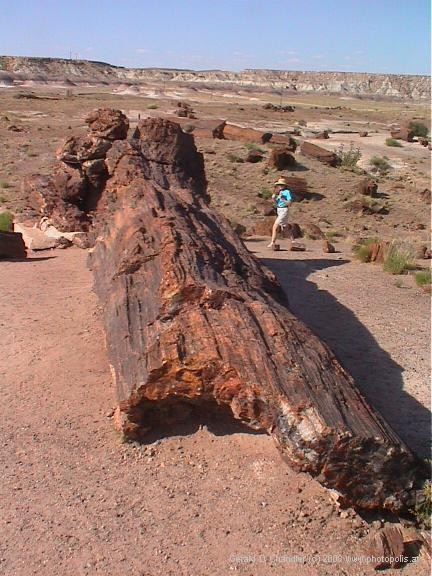
Petrified Tree |
When you first see the "trees" of the Petrified Forest you can't quite wipe out of your mind the idea that they are trees. They sort of look like trees but they don't feel like trees or decay like trees. In fact, what were trees decayed over 250 million years ago and had all of their organic matter replaced by mineral deposits in such a way that they kept the appearance of wood grain. And the results are nothing less than amazing.
Moreover, the name of the park is a little misleading, but only a little. The image that comes to mind when one talks of a forest is one of row upon row of trees standing tall. This is not that kind of forest. It is a forest only in that there are a number of trees in the same area. This forest, however, is no longer vertical. All of the trees are fallen specimens that after falling were buried in sediment and then through the process of time and the working of silica-rich water have had all of their wood fiber replaced with silica and other minerals which have then hardened into stone. The trees which originally grew about 200 million years ago are astonishingly large. Some are up to 100 feet long and 6 feet across. Left buried for millions of years, the erosion that is constantly at work eventually wore away the layers above them to reveal them to us.
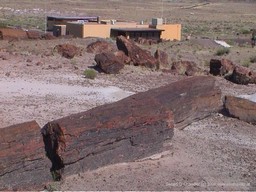
Petrified Tree |
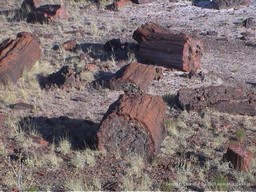
Petrified Tree |
The interesting thing for the ignorant visitor is that none of the trees remained "whole". First of all, for some reason not explained in the literature, none of them have branches — only the main trunk remains. Secondly, they are all in sections. As the earth moved, presumably, the brittle rock broke cleanly in several places. There are half a dozen groups of these remains to visit in the park. One such group highlights the semi-precious stones that became embedded in the petrified trees. Sadly, it seems that most of these have been pilfered so all that remains are holes. And this despite the fact of endless nanny-like warnings not to pick up any kind of rock and take it out of the park and spot checks on exit. Apparently some large number of tons of rock is stolen annually. Isn't that sad?
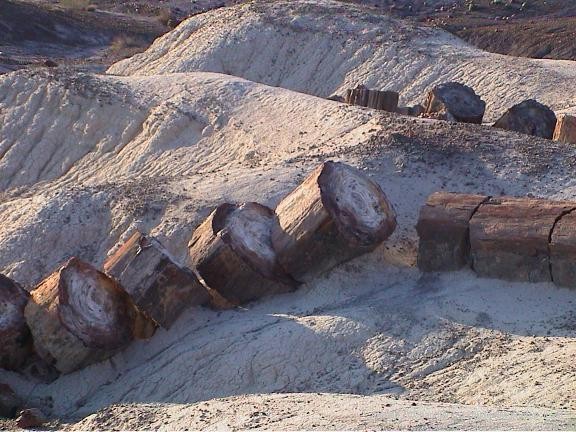
Petrified Tree |
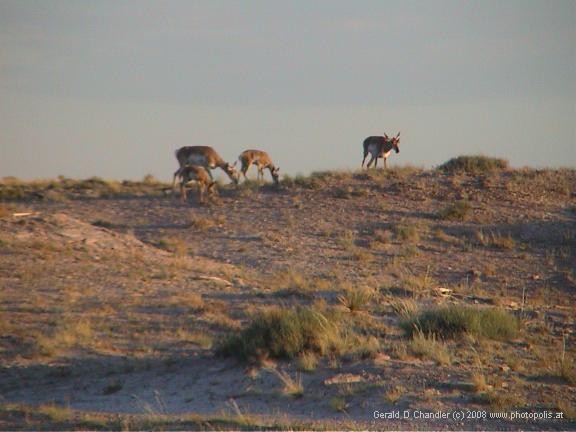
Grazing Antelopes |
Of the several sites scattered around the park not all are devoted to petrified trees. One at least is a plaza once inhabited by a pueblo group that contains not only ruins of houses but also petroglyphs. We haven't seen the famous cave paintings in France, but would like to compare them to these scratched images which we found throughout Arizona and the Sonoran desert of Mexico.
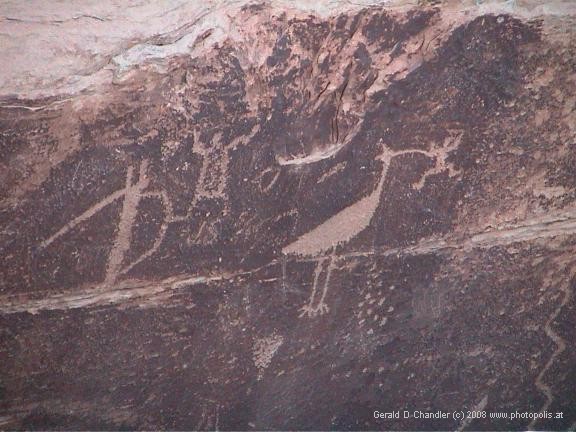
Rock Images |

Ancient Building |
Our last piece of gratuitous advice is not to go in July or August. It really is too darned hot to spend the time you really need to absorb what is really a quite remarkable phenomenon. As with every desert site we visited, the atmosphere was always best at the end of the day. The setting sun lends a warmth to the desert palette that cannot be denied.